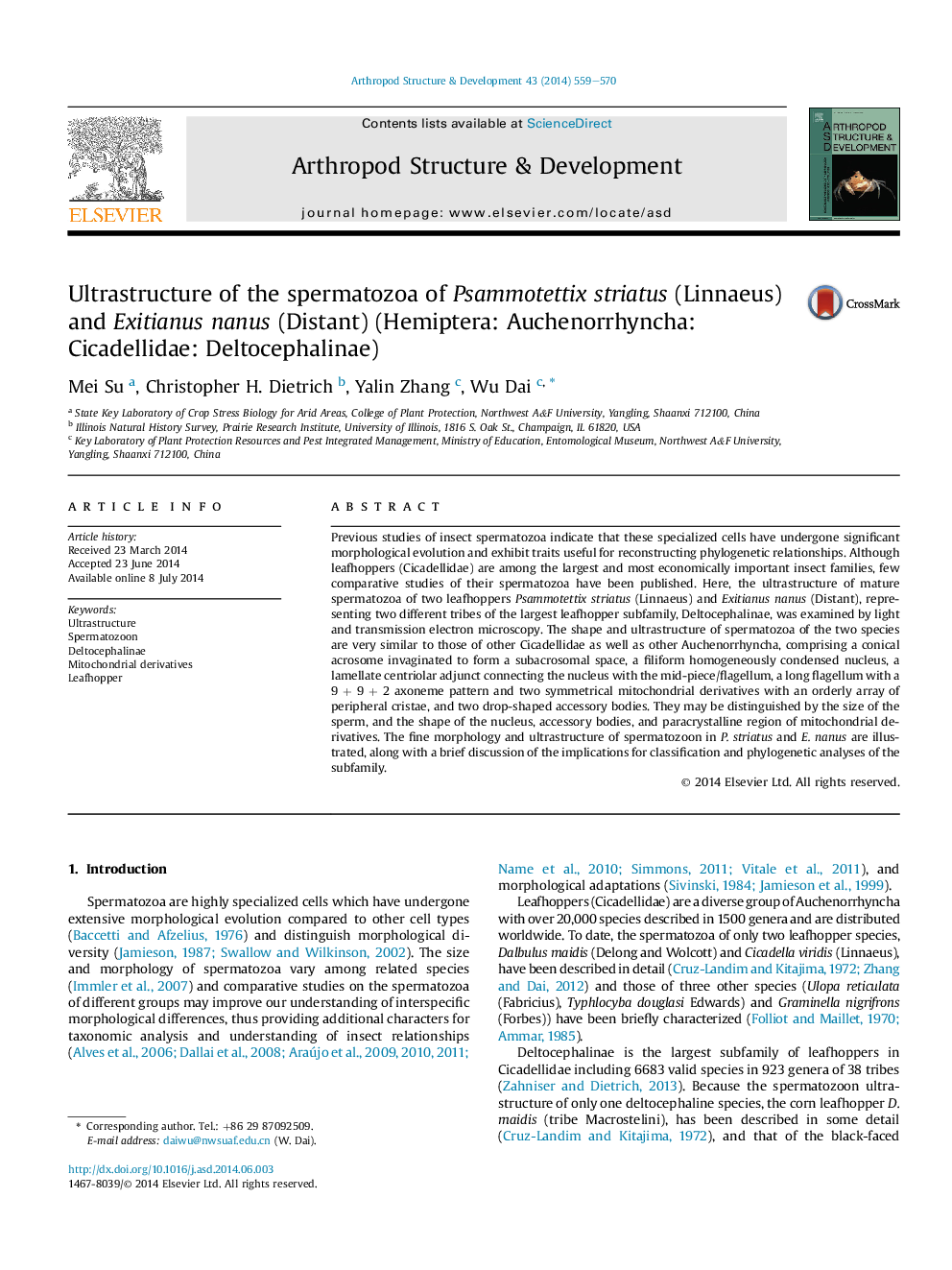| Article ID | Journal | Published Year | Pages | File Type |
|---|---|---|---|---|
| 2778667 | Arthropod Structure & Development | 2014 | 12 Pages |
•Ultrastructure of spermatozoans of Psammotettix striatus and Exitianus nanus were examined.•This is the most complete description of ultrastructure of deltocephaline leafhopper sperm.•Spermatozoa of the two examined species are very similar to those of other studied Cicadellidae.•The species may be distinguished by details of the ultrastructure.
Previous studies of insect spermatozoa indicate that these specialized cells have undergone significant morphological evolution and exhibit traits useful for reconstructing phylogenetic relationships. Although leafhoppers (Cicadellidae) are among the largest and most economically important insect families, few comparative studies of their spermatozoa have been published. Here, the ultrastructure of mature spermatozoa of two leafhoppers Psammotettix striatus (Linnaeus) and Exitianus nanus (Distant), representing two different tribes of the largest leafhopper subfamily, Deltocephalinae, was examined by light and transmission electron microscopy. The shape and ultrastructure of spermatozoa of the two species are very similar to those of other Cicadellidae as well as other Auchenorrhyncha, comprising a conical acrosome invaginated to form a subacrosomal space, a filiform homogeneously condensed nucleus, a lamellate centriolar adjunct connecting the nucleus with the mid-piece/flagellum, a long flagellum with a 9 + 9 + 2 axoneme pattern and two symmetrical mitochondrial derivatives with an orderly array of peripheral cristae, and two drop-shaped accessory bodies. They may be distinguished by the size of the sperm, and the shape of the nucleus, accessory bodies, and paracrystalline region of mitochondrial derivatives. The fine morphology and ultrastructure of spermatozoon in P. striatus and E. nanus are illustrated, along with a brief discussion of the implications for classification and phylogenetic analyses of the subfamily.
